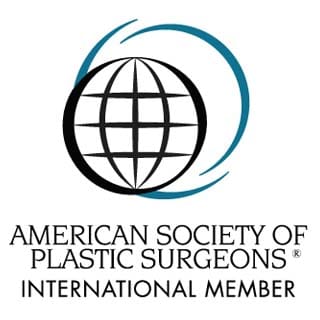
A full recovery from thigh lift surgery might be expected after four or six months. Following this period, you will be able to resume all normal activities, which may include vigorous exercise and strenuous activity.
In general, about six weeks after the procedure, your incisions should be healed, and you should feel much better. At this point, you can gradually resume your normal activities. Depending on the nature of your job, you may be able to return to work after two weeks. In any case, it must always be discussed with the plastic surgeon and must only be done with his permission.
Please note that the length of the recovery also depends on some other factors, such as the type of thigh lift you had as well as the ability of your body to recover. You are likely to have a shorter recovery time if you receive a mini-thigh lift. The same is true of a medial thigh lift; it is quite discreet, there is minimal scarring, and the healing process is smoother and faster.
A more extensive thigh lift, like a vertical or lateral (outer) thigh lift, normally requires a longer recovery period, at least two months.
The skills and experience level of the doctor who is performing this plastic surgery is also a big factor. Choosing the right surgeon and strictly following his post-surgery instructions can help you recover faster and achieve optimal results.

Here are some tips on what to do on the day of your plastic surgery.
Following your thigh lift, you will probably feel quite tired and exhausted. This is not unusual considering that this aesthetic procedure is generally performed under general anaesthesia. It is therefore recommended that you minimize movement and take adequate rest during that time.
As the effect of anaesthesia wears off, you will likely experience soreness in the thigh area. You can control this pain by taking the pain medication prescribed by your cosmetic surgeon. You should not use any other medications unless your doctor has approved them.
It is normal to feel dehydrated after having general anaesthesia. You can begin drinking a small amount of water and gradually increase it throughout the day. Keeping your body well hydrated is very important for your recovery. Drinking water also helps your body eliminate toxins from anaesthesia.

It is possible that you won’t be able to eat right after your cosmetic surgery. However, it is a good idea to have some food one or two hours following your operation. Stick to more light and healthy food options such as hearty soups, soft fruits and vegetables. You should stay away from salty and processed foods as well as fried and fatty ones as they may contribute to additional swelling.
There is a high likelihood that you will be discharged from the hospital the same day. However, you will not be able to drive, so you will need someone to pick you up. It is recommended that you do not drive for at least two weeks after your plastic surgery.
The next day following surgery is often the most challenging time for many patients. Here are some ways to make it easier.
In the first few days, you are more likely to feel discomfort, pain and tiredness. You may need someone to provide you with care during this period.
A thigh lift is a major operation. During the procedure, the plastic surgeon will remove excess fat and loose skin from the thigh area in order to reshape your outer or inner thigh. It often requires large incisions, especially if you have undergone vertical or lateral thigh lift procedures. That is why the majority of patients experience some pain and discomfort in the first two to three days following this cosmetic surgery. However, you will be prescribed pain killer medication to help you through your recovery.
After your plastic surgery, your thighs will be fitted with a compression garment. It is essential to wear it according to the instructions of your surgeon. The support garment will prevent your incisions from injuries and will support your body to heal smoother.
After a thigh lift, it is normal for the surgical site to become swollen and bruised. These may persist for two weeks or longer. Applying cold compresses for the first couple of days of your surgery may help you relieve bruising and swelling.
When you sleep, you can place some pillows or anything else under your legs that will keep them in an elevated position. It will help relieve swelling.
For a smoother and painless thigh lift recovery, follow the tips below.
You will need to return to your surgeon’s office one week after your thigh lift. Your surgeon needs to monitor the recovery process and ensure that everything goes smoothly. It is a good time to consult with your doctor if you have any questions or concerns about your recovery.
You must continue wearing your support clothing every day, 24 hours a day. Compression garments are very important because they will ease the healing process. This will also help you achieve more favourable results. You will need to wear it for several weeks.
Although you may feel sore and exhausted during the first week, it is not a good idea to stay in bed all the time. Try to move around and go for short, and light walks from time to time. This is essential because it will promote blood circulation and prevent blood clots. Just be careful not to overdo it. You can follow your body’s signals. After a week or so, you should become more comfortable walking. However, you will still need to avoid stretching and performing strenuous exercise for at least six to eight weeks. You should not apply excessive force to your incisions since they are still fresh.
Keep in mind that the new incisions are very sensitive. They can burn very easily if exposed to sunlight. It is best to stay away from UV rays even after 6 months when the incisions are healed. You can safely take sunbaths a year after thigh lift surgery, but you need to ensure you protect your incisions with sunscreen.
You shouldn’t use saunas or hot tub for at least six weeks after your thigh lift surgery. They can be dangerous for your incisions and may lead to infection.
The first few weeks are usually fairly unpleasant. You need to be careful and circumspect during this period. After three to four weeks, however, most patients feel much better and can resume normal activities.
Your incisions should be fully healed within four to six weeks. The majority of patients no longer need support garments at this point.
Although swelling and bruising will significantly reduce after two to three weeks, their complete disappearance typically takes four to six weeks. If you had more extensive surgery, please keep in mind that swelling can last up to six weeks.
By this point, you will feel more confident, so make sure to gradually increase your activity level. In spite of this, it is still better to avoid heavy lifting and strenuous activity.
The scars can range in colour from light pink to deep purple. In any case, you don’t need to worry because their appearance will gradually lighten as time passes.

After six months, there is no limit to what you can do. In fact, exercise and being active are highly recommended to help maintain a stable weight and to maximize the results from your thigh lift.
The results of your plastic surgery will show up after six months. Your thighs should look better, and your body as a whole will improve. In any case, you will still see improvements even after six months following the thigh lift procedure.
Your scars will become less visible. Keep in mind that their visibility will also greatly depend on the type of thigh lift procedure you had. Scars from a mini thigh lift and medial (inner) thigh lift are generally less noticeable than scars from more complex procedures like lateral and vertical thigh lifts. Your surgeon may recommend that you use scar creams to reduce the visibility of the scars.
Typically, your surgeon will recommend that you wear a support garment for 3 to 4 weeks after thigh lift surgery. This garment will reduce swelling and enhance your results. You should be prepared to wear it 24/7. You can only remove it while showering.
If you feel comfortable, you might be able to take very short and light walks around your home a few days after surgery. After two weeks you can start walking more. Be sure to keep it slow, though. Approximately one month after your surgery, you will be able to walk faster and farther.
There is a significant amount of pain for the first few days, and it can be quite an uncomfortable time. You can expect the pain to subside one week after your surgery. Until then, you will be able to manage it with pain medications.
The scars will gradually lighten and become almost invisible after 6 months to a year. Nevertheless, they will not completely disappear.
A thigh lift is a surgical procedure that is not intended to eliminate cellulite. However, because the doctor tightens the skin during the procedure, cellulite may become less noticeable as a result.
Even though a thigh lift isn’t a weight-loss operation, you are likely to lose some weight following the procedure. In this operation, the surgeon will remove excess skin and fat, which will ultimately lead to losing a few pounds. However, thigh lift shouldn’t be used for this purpose. Actually, it works best for patients who have already achieved their goal weight.
You will be advised to keep your legs elevated while sleeping the first two to three nights. You can do this by using pillows. Elevating your legs will help with swelling.
Most of the time, the swelling goes down after 4 to 6 weeks following a thigh lift. However, it is possible to experience it for longer than two months. It all depends on the type of thigh lift surgery you had as well as the ability of your body to heal. You also need to make sure you strictly follow your surgeon’s instructions.
It is best to avoid taking a shower for the first 2-3 days after your thigh surgery because it may lead to reopening of the incisions and infections. After this time, you might be able to shower, but you need to make sure you keep the incision sites dry. If you are not sure when you can safely take a shower, consult with your surgeon.

Dr. Shenthilkumar Naidu (Dr. Shens) is a Ministry of Health accredited Consultatn Plastic Surgeon with extensive expertise in cosmetic and reconstructive surgery. He is renowned for his advanced techniques in body contouring and aesthetic enhancements. For more information, visit Shens Clinic.
Monday – Friday: 09:00am – 06:00pm
Saturday: 09:00am – 02:00pm
Sun and PH: Closed
(Strictly by appointment only)

Copyright ⓒ Shens Clinic | Privacy Policy | Terms and Conditions .